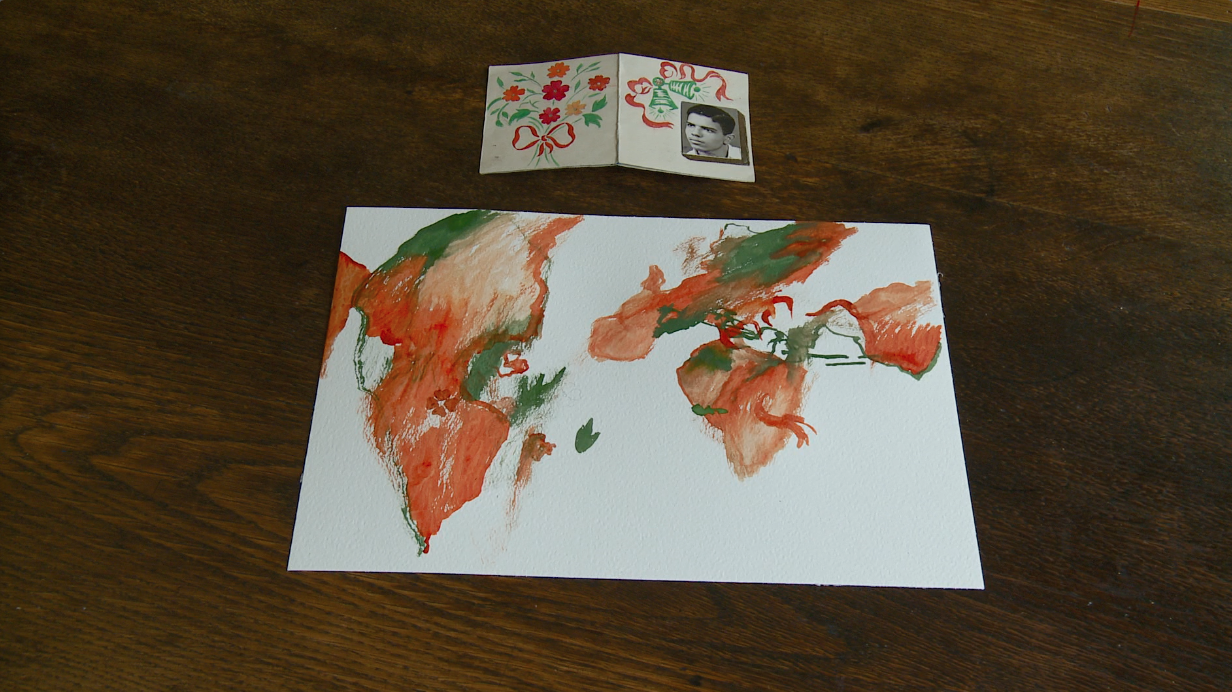
© » KADIST
Candice Lin
For the work Wigan Pit-Brow Women: Intersections with the Caribbean (mobile) , Candice Lin studied English Victorian Arthur Munby’s racialized and masculinized drawings of working-class white female miners. Specifically, Lin’s work critically addresses Munby’s observations about the laborers’ femininity that was more concerned with the modesty of the women, than that they toiled in life-threatening situations. “Pit brow women” or “pit brow lasses” were female surface laborers at British collieries.

© » KADIST
Camel Collective
Something Other Than What You Are by Camel Collective is formed by two works: a multi-channel video installation with controlled lighting, and a single-channel version with stereo sound. In both works, the 36 minute video depicts a narrative taking place outside of a live theater performance in the form of monologues that moves between the production and technical crew. There is a set of three different characters—a lighting technician, a lighting designer, and a professor all played by the same actress who share in their personal experiences and attitudes the precariousness of their work, the problems and myths of collaboration, and the obsolescence of theatrical technology.
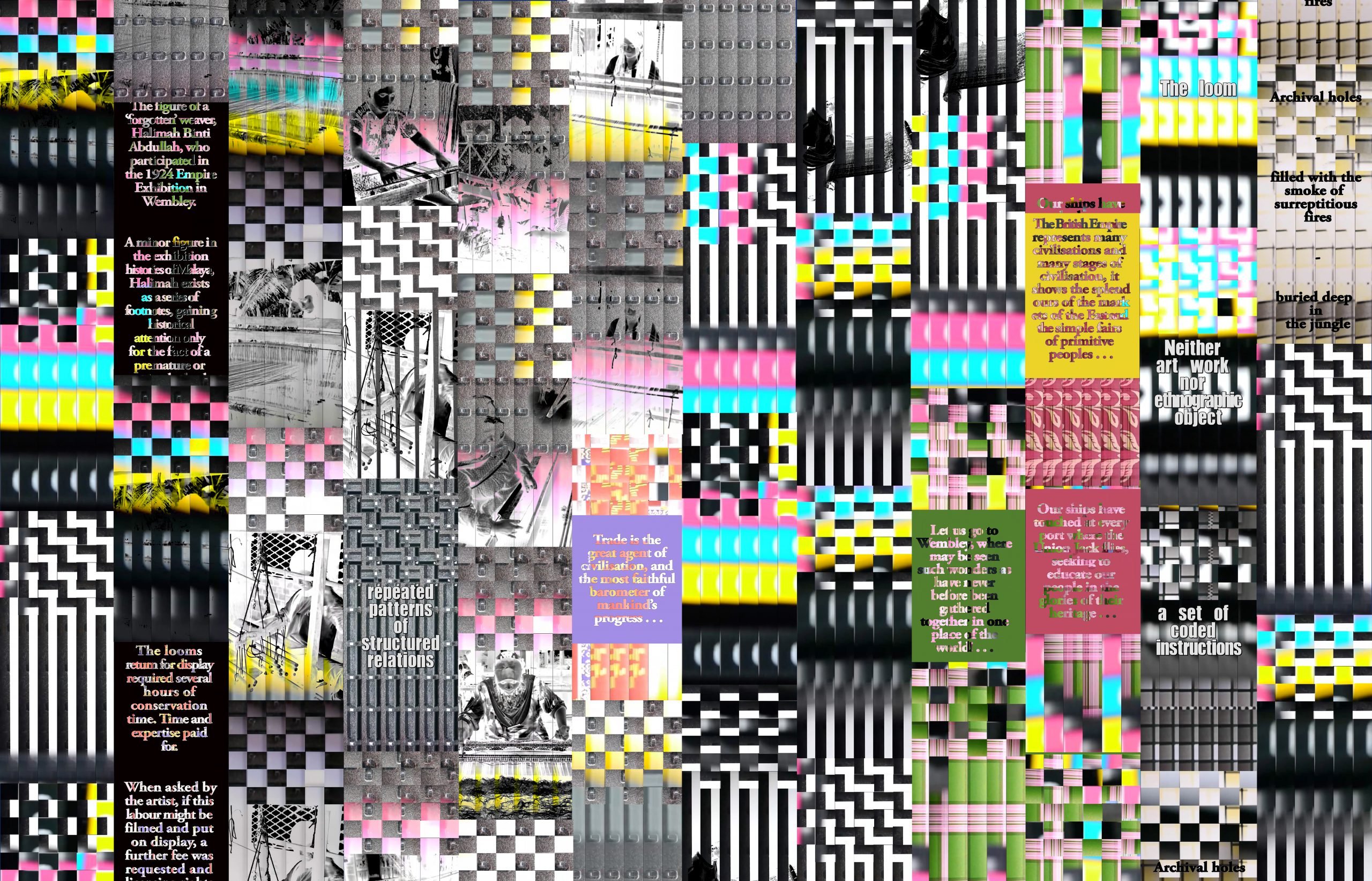
© » KADIST
Erika Tan
Part of an installation commissioned by National Gallery Singapore, The Weaver’s Lament by Erika Tan addresses the invisibility of women textile artists and their labor. Tan’s video focuses on the story of a forgotten weaver, Halimah Binti Abdullah, who participated in the 1924 British Empire Exhibition in the United Kingdom. A minor figure in the exhibition histories of what was formerly known as Malaya, Abdullah’s loom was left behind at the end of the exhibition, now residing in the Victoria and Albert Museum.

© » KADIST
Prabhakar Kamble
To produce the series of sculptures collectively titled Utarand , Prabhakar Kamble relocated his studio to Kolhapur, Maharashtra, near the village where he was born into a family of daily wage earners. Kamble cast the feet of agricultural workers in metal to prop up the eponymous terracotta pots traditionally used to store food and grains in every home. A commentary on the caste system’s four-tiered hierarchy, the pots become smaller as they go up the stand, mimicking the structure of society where most of the population is comprised of impoverished communities, which form the base of the caste system while a small minority makes up the wealthy upper castes.

© » KADIST
Prabhakar Kamble
To produce the series of sculptures collectively titled Utarand , Prabhakar Kamble relocated his studio to Kolhapur, Maharashtra, near the village where he was born into a family of daily wage earners. Kamble cast the feet of agricultural workers in metal to prop up the eponymous terracotta pots traditionally used to store food and grains in every home. A commentary on the caste system’s four-tiered hierarchy, the pots become smaller as they go up the stand, mimicking the structure of society where most of the population is comprised of impoverished communities, which form the base of the caste system while a small minority makes up the wealthy upper castes.
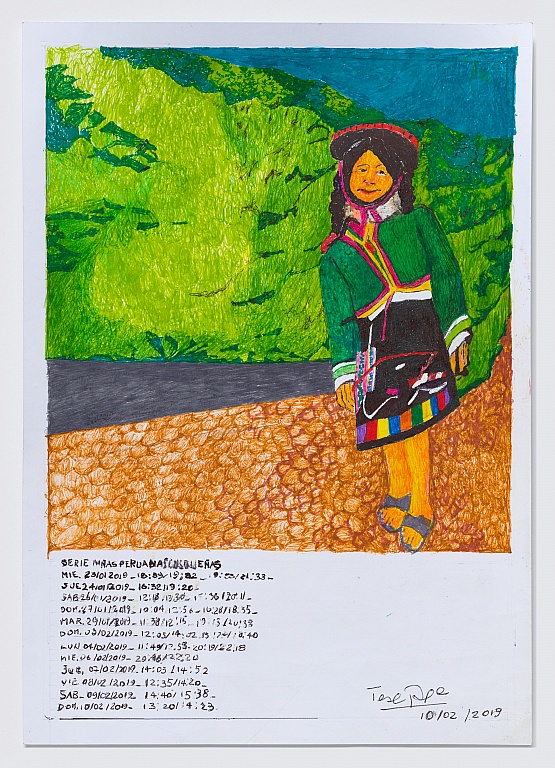
© » KADIST
Teresa Burga
Drawing & Print (Drawing & Print)
In her new series titled Ninas Peruanas Cusquenas , Teresa Burga depicts young indigenous women from Peru’s Andean region, dressed in traditional garments. Sourcing imagery from the internet, the drawings recall an untitled series of drawings from 1974, in which Burga selected images of women at random from various print media, and then rendered the images on paper. Those drawings, like the newer ones, suggest the perils of images without context––how assumptions are made, stereotypes are formed, and knowledge is gathered.

© » KADIST
Jung Yoonsuk
Tomorrow by Jung Yoonsuk is a two-channel video installation, observing the two different sites of factories, one in the mannequin reform factory in Seoul, Korea, and the other in a sex doll factory in Shenzhen, China. The artist’s research began in 2016 when he encountered articles, and some dystopian images, about a “retired sex doll”, a spooky, deformed dummy with big breasts, that stood in an agricultural field backdrop of a high-rise apartment complex in Chengdu, China. Jung’s work explores the factory scene, the (mostly female) workers and their labor, the doll’s artificiality, and human-like eccentricities.

© » KADIST
Birender Kumar Yadav
Birender Kumar Yadav comes from Dhanbad, India, a city built on its proximity of iron ore and coal and once forested and inhabited by Indigenous people who compose the Gondwana. The forests were felled and immigrants from northern Bihar and South India were brought to exploit the mineral resources. The Indigenous people were then dispersed to live nomadically, engaging themselves as seasonal workers in farms and industries.

© » KADIST
Li Xiaofei
Combined into a single two-channel HD video, Li Xiaofei’s Ponytail and Chongming Island II are silent portraits of the women assembly line workers at a Chinese kitchenware factory. Close-up shots of women’s heads—most notably of the rear with their hair in the similar updo fashion—and faces occupy the frame amidst a backdrop of a revolving steel conveyor. In lieu of dialogue or humming of the machinery, a ringing score of chimes and bells provides a tranquil soundtrack.

© » KADIST
Prabhakar Kamble
To produce the series of sculptures collectively titled Utarand , Prabhakar Kamble relocated his studio to Kolhapur, Maharashtra, near the village where he was born into a family of daily wage earners. Kamble cast the feet of agricultural workers in metal to prop up the eponymous terracotta pots traditionally used to store food and grains in every home. A commentary on the caste system’s four-tiered hierarchy, the pots become smaller as they go up the stand, mimicking the structure of society where most of the population is comprised of impoverished communities, which form the base of the caste system while a small minority makes up the wealthy upper castes.

© » KADIST
Nikita Gale
RUINER III by Nikita Gale is part of an on-going numbered series of abstract sculptures in which various ancillary materials necessary for sound production and recording such as towels, foam, and audio cables, are riddled around piping resembling crowd control bollards, lighting trusses, and other like stage architecture. While these muscular works evoke the forms and dynamism of mid-century modernism, they can also be seen as a translation of Goethe’s idea that “architecture is frozen music”. RUINER III is exemplary of how the artist’s disembodied sets typically evoke a sense of longing through absence, and in so doing, draw out an extended mediation on how audiences project mental or emotional energy onto a person, object, or idea.

© » KADIST
Jeamin Cha
In On Guard by Jeamin Cha, a security guard receives safety training, juxtaposed against his patrol of an empty building as he tries to give care instructions for his ailing mother over the phone. The film dismantles the binary oppositions between “caring” and “guarding,” two actions that parallel one another in their emphasis on attentiveness without a logical conclusion. Cha’s exploration of the relationship between these two focuses is channeled through nocturnal urban space, drawing attention to the labor that each requires.

© » KADIST
Birender Kumar Yadav
Drawing & Print (Drawing & Print)
Birender Kumar Yadav comes from Dhanbad, India, a city built on its proximity of iron ore and coal and once forested and inhabited by Indigenous people who compose the Gondwana. The forests were felled and immigrants from northern Bihar and South India were brought to exploit the mineral resources. The Indigenous people were then dispersed to live nomadically, engaging themselves as seasonal workers in farms and industries.

© » KADIST
Xyza Cruz Bacani
Occupy HK 2014 is a series of 18 photographs that Xyza Cruz Bacani’s shot at the height of the Umbrella Movement in Hong Kong. At the time, the Umbrella Movement was considered the largest social unrest defending the democratic aspirations of Hong Kongers, who flooded the streets to demand universal suffrage. The protestors even managed to block Hong Kong’s main highway for months, freezing Asia’s financial centre.

© » KADIST
Julian Abraham
In 2015, while in residence at the Jatiwangi Art Factory (JaF) located in the village of Jatisura in Jatiwangi, West Java, Indonesia, Togar initiated the Jatiwangi Cup in which the artist, together with communities in the area, established an annual bodybuilding contest. The area is renowned for its roof tile factories, and the cup aims to celebrate the factory worker’s physiques, sculpted by intense, daily, physical labor. Togar based the idea of the cup on the simple notion of collectivity.

© » KADIST
Sancintya Mohini Simpson
Dhuwã (term used by indentured people of Natal for ‘smoke’), is a single-channel film by Sancintya Mohini Simpson that traces back to the lived experiences of indentured labourers taken from India to Natal (now KwaZulu-Natal, South Africa) to work on sugar plantations during the late 1800s and early 1900s. This often-overlooked chapter in colonial history is close to the artist, as her maternal family were contracted to a sugar plantation in Natal. Filmed originally in 16mm film, Dhuwã captures sugarcane plantations in North Queensland, initially in moments of stillness that are gradually disrupted by a crescendo of repetitive sounds and fast camera movements that culminate in the fields being engulfed by flames.

© » KADIST
Yoshinori Niwa
Yoshinori Niwa’s investigation into the monetary system and material goods is witnessed across a range of his works. As the title of this work indicates, Niwa visits several currency exchanges in the market in Istanbul and proceeds to continually exchange from one currency into another until he has no money left, going against the grain of the economy. The laborious act of exchanging the currency back and forth does not create any profit.
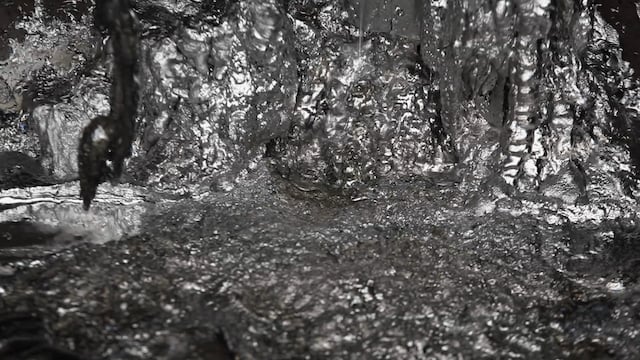
© » KADIST
Li Xiaofei
Argentum is part of Li Li Xiaofei’s Assembly Line series. The film was shot in Dongchuan, a small town 180 km from Kunming. Ten years ago, in order to attract foreign investment, Dongchuan officially became a district of Kunming, thus giving it access to preferential policies.

© » KADIST
Xyza Cruz Bacani
Occupy HK 2014 is a series of 18 photographs that Xyza Cruz Bacani’s shot at the height of the Umbrella Movement in Hong Kong. At the time, the Umbrella Movement was considered the largest social unrest defending the democratic aspirations of Hong Kongers, who flooded the streets to demand universal suffrage. The protestors even managed to block Hong Kong’s main highway for months, freezing Asia’s financial centre.
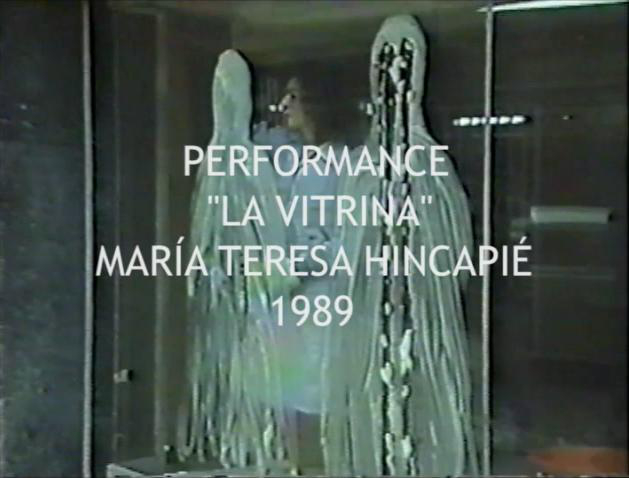
© » KADIST
María Teresa Hincapié
In the performance video Vitrina , María Teresa Hincapié stood inside a storefront window in downtown Bogota, unannounced, for eight hours a day, wearing a uniform and initially carrying out cleaning chores. As the day and passers went by, the routine became more playful: she would send kisses to bus drivers on the busy Avenida Jiménez who would return them, use the newspaper with which she was shining the glass to flirtatiously hide and engage with an improvised audience or draw the shape of her body with soap and a sponge. She would interrupt these chores to carry out other ‘feminine’ activities, like brushing her hair or applying make-up, only to return to frantically cleaning the transparent surface that separated her from the public.

© » KADIST
Prajakta Potnis
he woke up with seeds in his lungs by Prajakta Potnis is a set of x-ray films presented through backlit light boxes of found objects constructed to evoke the body or organs that turns the host into a foreign element. The title of the work is inspired by a story the artist came across during her research, according to which a man had swallowed seeds that started to grow inside his organs. In the work, interior scapes of the body appear as radioactive rays pass through various materials.

© » KADIST
Xyza Cruz Bacani
Occupy HK 2014 is a series of 18 photographs that Xyza Cruz Bacani’s shot at the height of the Umbrella Movement in Hong Kong. At the time, the Umbrella Movement was considered the largest social unrest defending the democratic aspirations of Hong Kongers, who flooded the streets to demand universal suffrage. The protestors even managed to block Hong Kong’s main highway for months, freezing Asia’s financial centre.

© » KADIST
Gauri Gill
Acts of Appearance is an ongoing series by Gauri Gill consisting of lush, large-scale color portraits of the residents of a village in Maharashtra, in Western India, which is known for making Adivasi masks. Adivasi people are part of the tribal groups population of South Asia. Instead of requesting the likenesses of gods and demons, Gill asked the residents—including the master mask-makers Subhas and Bhagavan Dharam Kadu, their families, and fellow volunteers—to make masks that portray their own lives.

© » KADIST
Xyza Cruz Bacani
Occupy HK 2014 is a series of 18 photographs that Xyza Cruz Bacani’s shot at the height of the Umbrella Movement in Hong Kong. At the time, the Umbrella Movement was considered the largest social unrest defending the democratic aspirations of Hong Kongers, who flooded the streets to demand universal suffrage. The protestors even managed to block Hong Kong’s main highway for months, freezing Asia’s financial centre.

© » KADIST
Xyza Cruz Bacani
Occupy HK 2014 is a series of 18 photographs that Xyza Cruz Bacani’s shot at the height of the Umbrella Movement in Hong Kong. At the time, the Umbrella Movement was considered the largest social unrest defending the democratic aspirations of Hong Kongers, who flooded the streets to demand universal suffrage. The protestors even managed to block Hong Kong’s main highway for months, freezing Asia’s financial centre.

© » KADIST
Julian Abraham
In 2015, while in residence at the Jatiwangi Art Factory (JaF) located in the village of Jatisura in Jatiwangi, West Java, Indonesia, Togar initiated the Jatiwangi Cup in which the artist, together with communities in the area, established an annual bodybuilding contest. The area is renowned for its roof tile factories, and the cup aims to celebrate the factory worker’s physiques, sculpted by intense, daily, physical labor. Togar based the idea of the cup on the simple notion of collectivity.

© » KADIST
Julia Rommel
On the artwork, Rommel states: “I was reading Jonathan Franzen’s new novel Purity, where they take a lot of walks through the jungle in Uruguay, or Paraguay, I can’t remember. One of the characters takes a walk and jumps off a cliff; it’s kind of dark. The painting reminded me of a long, dark, and very serious walks in beautiful places.” With references to Howard Hodgkin in the incorporation of the stretcher into the painting and certain kinds of mark making, to Matisse’s cut outs and to the history of Cubist collage, Rommel has created a dreamy oeuvre that manifests her strong conceptual interest in process and unmapped journeys.

© » KADIST
Laura Huertas Millán
La libertad is a “greca” film, a meander film, with no beginning nor end, weaving together fragments of daily life at the Navarro´s, counting threads and time, wondering and wandering around words as emancipation, labor, and freedom (la libertad), the word that most appeared in our conversations. The “greca”, the meander, is the main symbol weaved in the textiles made by the Navarro sisters, from Santo Tomás Jalieza, México. A geometrical form of an endless braid of diamonds, the “greca” represents corn, an entity worshiped by the pre-hispanic civilisations of Mesoamerica.

© » KADIST
Elena Tejada-Herrera
Las Bambas by Elena Tejada-Herrera takes the name of a copper mine in the Andean department of Apurímac, Peru. The operations of this mining project were resisted by the local peasant communities, whose protests forced it to paralyze its operations. As of 2023, this is the most serious unresolved social conflict in the country.
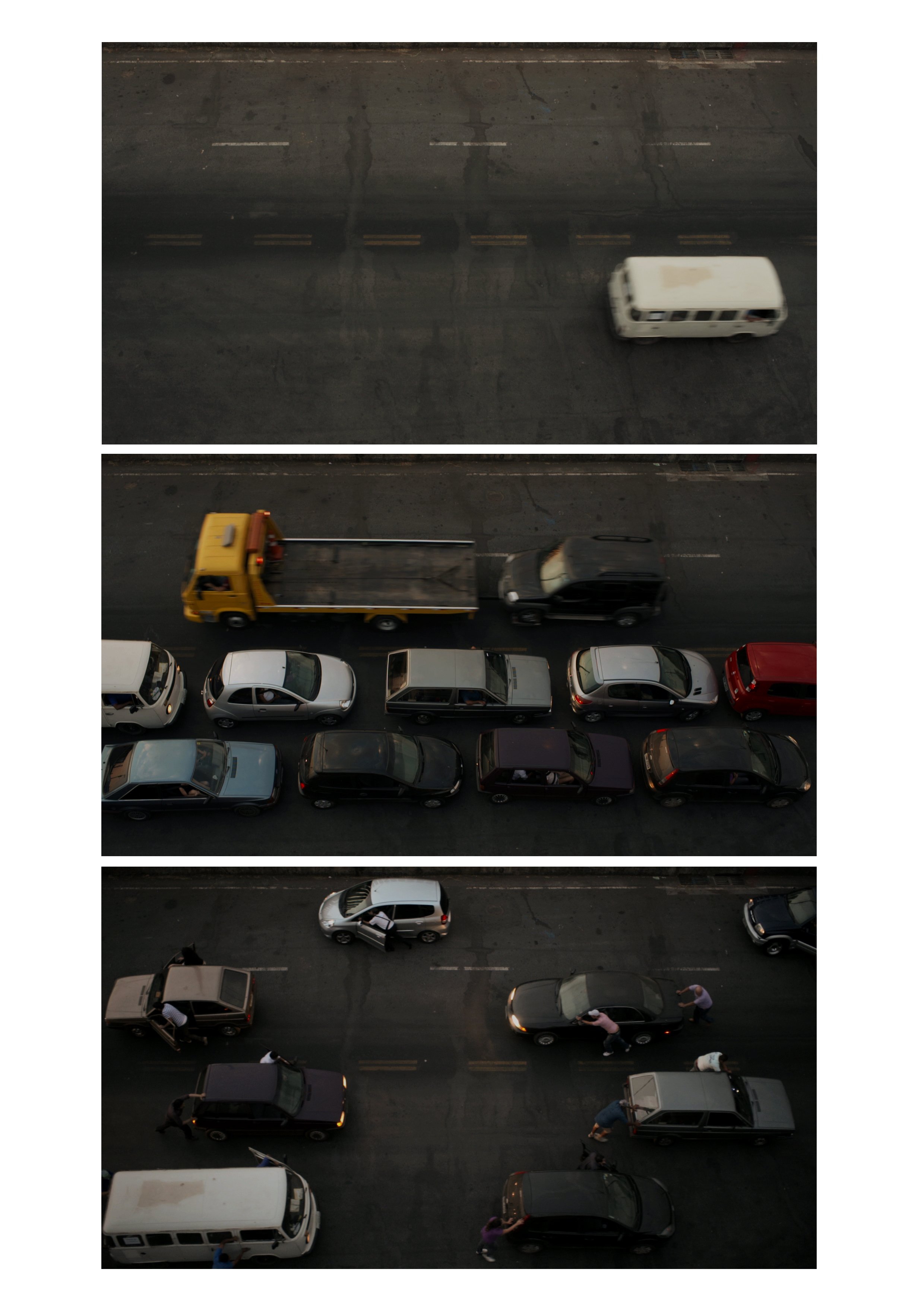
© » KADIST
Cinthia Marcelle
Cinthia Marcelle’s video work Automóvel (2012) re-edits the mundane rhythms of automotive traffic into a highly compelling and seemingly choreographed meditation on sequence, motion, and time. Shot from an aerial vantage, the camera tracks the daily commute on a small stretch of concrete highway. The camera films the traffic below in short five-second excerpts before blacking out; time begins to collapse as the video shifts between scene, and the hours compress into minutes as daylight quickly turns into night.
Xyza Cruz Bacani
Xyza Cruz Bacani is a Filipina author and photographer who uses documentary-style photography to call attention to less visible, erased, and under-reported global events...
Prabhakar Kamble
Prabhakar Kamble is an artist, curator, and cultural activist...
Julian Abraham
Julian Abraham “Togar” is an artist, musician, and pseudo-scientist...
Li Xiaofei
Li Xiaofei initiated Assembly Line in 2010, an ongoing project that records industrialized social change not only China, but as it occurs internationally...
Birender Kumar Yadav
Birender Kumar Yadav is a multi-disciplinary artist who experiments with various media including painting, sculpture, photography, installation, etching, found and man-made objects, as well as live documentary...
Sancintya Mohini Simpson
Sancintya Mohini Simpson is an artist, writer, and researcher whose work addresses the impact of colonization on the historical and lived experiences of her family and broader diasporic communities...
Cinthia Marcelle
- location: Belo Horizonte, Brazil
- year born: 1974
- gender: female
- nationality: Brazilian
- home town: Belo Horizonte, Brazil
Teresa Burga
A pioneer of Latin American Conceptualism, since the 1960s, Teresa Burga has made works that encompass drawing, painting, sculpture, and conceptual structures that support the display of analytical data and experimental methodologies...
Jeamin Cha
Jeamin Cha’s questions exist in the gyre between individual and social environment, stepping over conspicuous strands of relation between the two in favor of cultivating characters that dwell in the night, under-noticed or otherwise surplus figures outside of mainstream societal representation...
Elena Tejada-Herrera
Elena Tejada-Herrera is a key figure at the intersection of feminist, performance, and technological art in Peru...
Julia Rommel
Julia Rommel (b...
Prajakta Potnis
Prajakta Potnis’s work dwells between the intimate world of an individual and the world outside, which is separated sometimes only by a wall...
Yoshinori Niwa
Yoshinori Niwa’s practice takes the form of social interventions, executed through performance, video and installation...
Gauri Gill
Gauri Gill is interested in the social contract of photography...
Clarissa Tossin
- location: Los Angeles, California
- year born: 1973
- gender: female
- nationality: Brazilian
- home town: Porto Alegre, Brazil
Jung Yoonsuk
As one of the notable Korean artists of his generation working across contemporary visual art and documentary cinema, Jung Yoonsuk has created internationally recognized documentary films like Lash (2022), Bamseom Pirates Seoul Inferno (2017), Non-Fiction Diary (2013), and Hometown of Stars (2010)...
Rindon Johnson
Rindon Johnson’s work in sculpture, video, poetry, and virtual reality deals with technologies that enable captivity and the harnessing and transformation of nature from a gender- and race-critical perspective...
Camel Collective
Camel Collective comprises the artists Carla Herrera-Prats (Mexican, photographer and conceptual artist) and Anthony Graves (American, painter), who began working together in 2005 during a fellowship at the Whitney Independent Program...
Erika Tan
Erika Tan’s practice is primarily research-driven with a focus on the moving image, referencing distributed media in the form of cinema, gallery-based works, Internet and digital practices...
-
1980-1989
María Teresa Hincapié
1989In the performance video Vitrina , María Teresa Hincapié stood inside a storefront window in downtown Bogota, unannounced, for eight hours a day, wearing a uniform and initially carrying out cleaning chores...
-
2000-2009
Gimhongsok
2007To explore the boundaries between artwork and audience, Gimhongsok created a series of sculptural performances in which a person wearing an animal costume poses in the gallery...
-
2010-2019
Yoshinori Niwa
2011Yoshinori Niwa’s investigation into the monetary system and material goods is witnessed across a range of his works...
Cinthia Marcelle
2012Cinthia Marcelle’s video work Automóvel (2012) re-edits the mundane rhythms of automotive traffic into a highly compelling and seemingly choreographed meditation on sequence, motion, and time...
Clarissa Tossin
2012In Fordlândia Fieldwork (2012), Tossin documents the remains of Henry Ford’s rubber enterprise Fordlândia, built in 1928 in the Brazilian Amazon to export cultivated rubber for the booming automobile industry...
Xyza Cruz Bacani
2014Occupy HK 2014 is a series of 18 photographs that Xyza Cruz Bacani’s shot at the height of the Umbrella Movement in Hong Kong...
Xyza Cruz Bacani
2014Occupy HK 2014 is a series of 18 photographs that Xyza Cruz Bacani’s shot at the height of the Umbrella Movement in Hong Kong...
Xyza Cruz Bacani
2014Occupy HK 2014 is a series of 18 photographs that Xyza Cruz Bacani’s shot at the height of the Umbrella Movement in Hong Kong...
Xyza Cruz Bacani
2014Occupy HK 2014 is a series of 18 photographs that Xyza Cruz Bacani’s shot at the height of the Umbrella Movement in Hong Kong...
Xyza Cruz Bacani
2014Occupy HK 2014 is a series of 18 photographs that Xyza Cruz Bacani’s shot at the height of the Umbrella Movement in Hong Kong...
Candice Lin
2015For the work Wigan Pit-Brow Women: Intersections with the Caribbean (mobile) , Candice Lin studied English Victorian Arthur Munby’s racialized and masculinized drawings of working-class white female miners...
Birender Kumar Yadav
Drawing & Print
2015(Drawing & Print) Birender Kumar Yadav comes from Dhanbad, India, a city built on its proximity of iron ore and coal and once forested and inhabited by Indigenous people who compose the Gondwana...
Gauri Gill
2015Acts of Appearance is an ongoing series by Gauri Gill consisting of lush, large-scale color portraits of the residents of a village in Maharashtra, in Western India, which is known for making Adivasi masks...
Julia Rommel
2015On the artwork, Rommel states: “I was reading Jonathan Franzen’s new novel Purity, where they take a lot of walks through the jungle in Uruguay, or Paraguay, I can’t remember...
Birender Kumar Yadav
2016Birender Kumar Yadav comes from Dhanbad, India, a city built on its proximity of iron ore and coal and once forested and inhabited by Indigenous people who compose the Gondwana...
Laura Huertas Millán
2016La libertad is a “greca” film, a meander film, with no beginning nor end, weaving together fragments of daily life at the Navarro´s, counting threads and time, wondering and wandering around words as emancipation, labor, and freedom (la libertad), the word that most appeared in our conversations...
Camel Collective
2018Something Other Than What You Are by Camel Collective is formed by two works: a multi-channel video installation with controlled lighting, and a single-channel version with stereo sound...
Jeamin Cha
2018In On Guard by Jeamin Cha, a security guard receives safety training, juxtaposed against his patrol of an empty building as he tries to give care instructions for his ailing mother over the phone...
Teresa Burga
Drawing & Print
2019(Drawing & Print) In her new series titled Ninas Peruanas Cusquenas , Teresa Burga depicts young indigenous women from Peru’s Andean region, dressed in traditional garments...
Julian Abraham
2019In 2015, while in residence at the Jatiwangi Art Factory (JaF) located in the village of Jatisura in Jatiwangi, West Java, Indonesia, Togar initiated the Jatiwangi Cup in which the artist, together with communities in the area, established an annual bodybuilding contest...
Julian Abraham
2019In 2015, while in residence at the Jatiwangi Art Factory (JaF) located in the village of Jatisura in Jatiwangi, West Java, Indonesia, Togar initiated the Jatiwangi Cup in which the artist, together with communities in the area, established an annual bodybuilding contest...
Elena Tejada-Herrera
2019Las Bambas by Elena Tejada-Herrera takes the name of a copper mine in the Andean department of Apurímac, Peru...
Rindon Johnson
Advanced Technology
2019(Advanced Technology) The VR play Meat Growers: A Love Story by Rindon Johnson centers on two meat growers who work together in a meat processing factory in the year 2100...
Sancintya Mohini Simpson
Drawing & Print
2019(Drawing & Print) And words were whispered by Sancintya Mohini Simpson is a series of ten works on paper based on the lived experiences of Indian women taken to the Natal region of South Africa from the 1860s to the early 1900s to work in tea and sugarcane plantations during apartheid, which included servitude in its broadest and most sinister definition...
-
2020-2029
Jung Yoonsuk
2020Tomorrow by Jung Yoonsuk is a two-channel video installation, observing the two different sites of factories, one in the mannequin reform factory in Seoul, Korea, and the other in a sex doll factory in Shenzhen, China...
Nikita Gale
2020RUINER III by Nikita Gale is part of an on-going numbered series of abstract sculptures in which various ancillary materials necessary for sound production and recording such as towels, foam, and audio cables, are riddled around piping resembling crowd control bollards, lighting trusses, and other like stage architecture...
Prajakta Potnis
2020he woke up with seeds in his lungs by Prajakta Potnis is a set of x-ray films presented through backlit light boxes of found objects constructed to evoke the body or organs that turns the host into a foreign element...
Sancintya Mohini Simpson
2021Dhuwã (term used by indentured people of Natal for ‘smoke’), is a single-channel film by Sancintya Mohini Simpson that traces back to the lived experiences of indentured labourers taken from India to Natal (now KwaZulu-Natal, South Africa) to work on sugar plantations during the late 1800s and early 1900s...
Prabhakar Kamble
2022To produce the series of sculptures collectively titled Utarand , Prabhakar Kamble relocated his studio to Kolhapur, Maharashtra, near the village where he was born into a family of daily wage earners...
Prabhakar Kamble
2022To produce the series of sculptures collectively titled Utarand , Prabhakar Kamble relocated his studio to Kolhapur, Maharashtra, near the village where he was born into a family of daily wage earners...
Prabhakar Kamble
2022To produce the series of sculptures collectively titled Utarand , Prabhakar Kamble relocated his studio to Kolhapur, Maharashtra, near the village where he was born into a family of daily wage earners...








